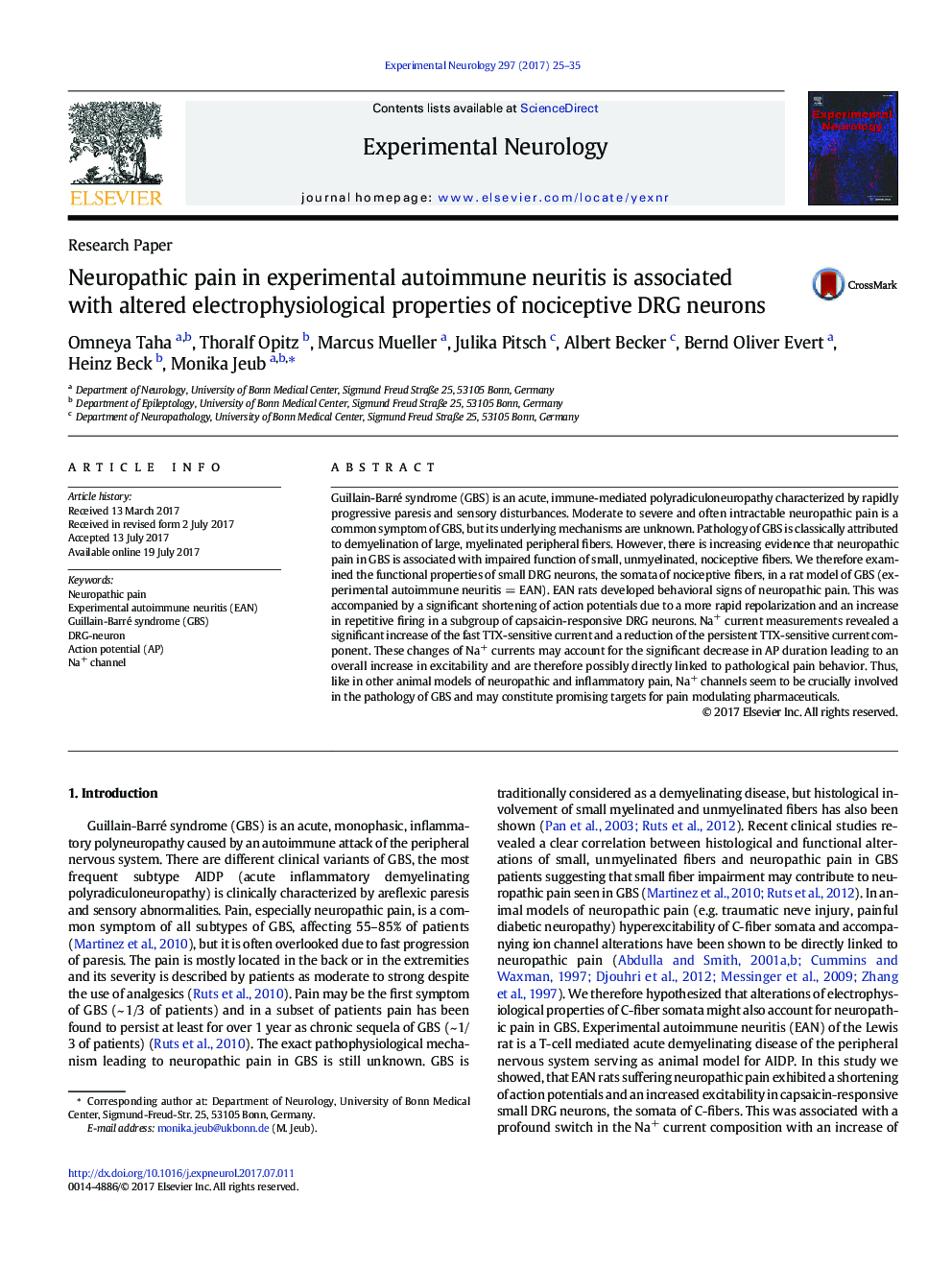| کد مقاله | کد نشریه | سال انتشار | مقاله انگلیسی | نسخه تمام متن |
|---|---|---|---|---|
| 5629079 | 1580142 | 2017 | 11 صفحه PDF | دانلود رایگان |

- Rats with EAN develop behavioral signs of neuropathic pain.
- Nociceptive DRG neurons of EAN rats display signs of an increased excitability.
- Changes of Na+ channels may account for the alterations in excitability.
- Na+ channels may constitute targets for pain modulating pharmaceuticals in GBS.
Guillain-Barré syndrome (GBS) is an acute, immune-mediated polyradiculoneuropathy characterized by rapidly progressive paresis and sensory disturbances. Moderate to severe and often intractable neuropathic pain is a common symptom of GBS, but its underlying mechanisms are unknown. Pathology of GBS is classically attributed to demyelination of large, myelinated peripheral fibers. However, there is increasing evidence that neuropathic pain in GBS is associated with impaired function of small, unmyelinated, nociceptive fibers. We therefore examined the functional properties of small DRG neurons, the somata of nociceptive fibers, in a rat model of GBS (experimental autoimmune neuritis = EAN). EAN rats developed behavioral signs of neuropathic pain. This was accompanied by a significant shortening of action potentials due to a more rapid repolarization and an increase in repetitive firing in a subgroup of capsaicin-responsive DRG neurons. Na+ current measurements revealed a significant increase of the fast TTX-sensitive current and a reduction of the persistent TTX-sensitive current component. These changes of Na+ currents may account for the significant decrease in AP duration leading to an overall increase in excitability and are therefore possibly directly linked to pathological pain behavior. Thus, like in other animal models of neuropathic and inflammatory pain, Na+ channels seem to be crucially involved in the pathology of GBS and may constitute promising targets for pain modulating pharmaceuticals.
Journal: Experimental Neurology - Volume 297, November 2017, Pages 25-35